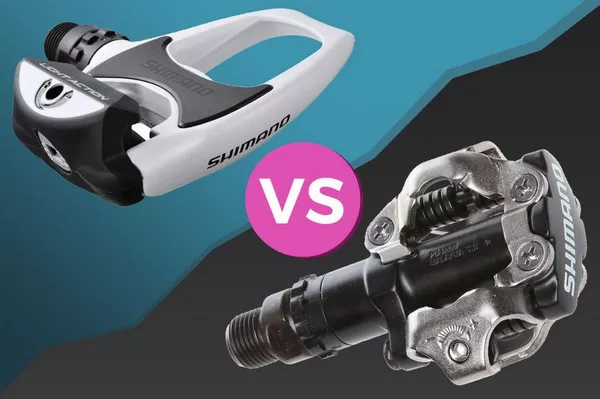Cycling enthusiasts often find themselves navigating the labyrinthine world of cleats, grappling with the myriad options available. Among the most common choices are SPD (Shimano Pedaling Dynamics) and SPD-SL cleats, both hailed for their efficiency and functionality. While they share a common purpose, these two cleat systems possess distinctive features that cater to varying preferences and cycling disciplines. Delving into their dissimilarities sheds light on their respective advantages, aiding cyclists in making informed decisions tailored to their specific needs.
SPD Cleats: Versatility and Practicality
SPD cleats, developed by Shimano, have long been favored by mountain bikers, commuters, and cyclists who value versatility and ease of use. Renowned for their practicality, SPD cleats are compatible with a broad range of cycling shoes, including those designed for off-road adventures and urban commuting. This versatility extends to the pedal systems, with SPD cleats seamlessly integrating into mountain bike pedals, hybrid pedals, and even some road pedals with dual-sided functionality.
One of the key distinguishing features of SPD cleats is their two-bolt design, characterized by a smaller cleat that attaches to the shoe using two screws. This design offers enhanced walkability, making it ideal for riders who frequently dismount during their journeys. Whether navigating treacherous trails or navigating bustling city streets, SPD cleats provide cyclists with the confidence to traverse varied terrain with ease.
Another advantage of SPD cleats lies in their recessed design, which prevents the cleat from protruding significantly from the sole of the shoe. This feature not only facilitates comfortable walking but also protects the cleat from wear and tear, prolonging its lifespan and ensuring reliable performance over time. Furthermore, the recessed cleat reduces the risk of accidental engagement, providing cyclists with added peace of mind during their rides.
SPD-SL Cleats: Optimal Power Transfer and Stability
In contrast to SPD cleats’ utilitarian design, SPD-SL cleats prioritize efficiency and stability, catering primarily to road cyclists and enthusiasts of competitive cycling. Engineered for optimal power transfer, SPD-SL cleats boast a three-bolt configuration, with a larger cleat footprint that maximizes contact area with the pedal. This enhanced surface area translates to improved energy transfer, enabling riders to generate greater power with each pedal stroke.
The design of SPD-SL cleats also contributes to enhanced stability and control, particularly during high-speed descents and sprinting efforts. The larger cleat platform distributes pressure more evenly across the sole of the shoe, minimizing hot spots and reducing the likelihood of foot fatigue during prolonged rides. Additionally, the three-bolt system provides a secure connection between the shoe and pedal, reducing the risk of unintentional disengagement and promoting a more fluid pedaling motion.
While SPD-SL cleats excel in terms of performance and efficiency, they are less practical for activities that involve frequent stops or walking. The protruding nature of the cleat makes walking cumbersome and awkward, necessitating the use of cleat covers or specialized walking pads to mitigate discomfort. As such, SPD-SL cleats are best suited for road cycling endeavors where uninterrupted pedaling takes precedence over versatility and walkability.
Choosing the Right Cleat System: Factors to Consider
Selecting between SPD and SPD-SL cleats hinges on a myriad of factors, each tailored to the individual preferences and cycling objectives of the rider. To aid in this decision-making process, cyclists should consider the following aspects:
1. Cycling Discipline: Determine whether the majority of your cycling endeavors align with road cycling or off-road pursuits. Road cyclists will typically gravitate towards SPD-SL cleats for their superior power transfer and stability, while mountain bikers and commuters may opt for the versatility of SPD cleats.
2. Shoe Compatibility: Assess the compatibility of your cycling shoes with each cleat system. While many shoes are designed to accommodate both SPD and SPD-SL cleats, some may be optimized for one specific type. Ensure that your chosen cleats align with the specifications of your cycling footwear.
3. Walkability: Consider the extent to which you anticipate walking or dismounting during your rides. If frequent stops or off-bike excursions are commonplace, SPD cleats may offer greater convenience and comfort due to their recessed design and enhanced walkability.
4. Performance Goals: Evaluate your performance objectives and riding style. If maximizing power output and efficiency is paramount, SPD-SL cleats may provide a competitive edge, particularly in racing or high-intensity training scenarios.
5. Personal Preference: Ultimately, the decision between SPD and SPD-SL cleats boils down to personal preference and the unique requirements of each cyclist. Experimentation and feedback from fellow riders can offer valuable insights into the pros and cons of each cleat system, aiding in the selection process.
Conclusion
In conclusion, the disparity between SPD and SPD-SL cleats underscores the diverse needs and preferences within the cycling community. While both systems excel in their respective domains, understanding their differences empowers cyclists to make informed decisions that align with their individual goals and riding experiences. Whether navigating rugged trails or conquering winding roads, the right cleat system serves as a steadfast companion, enhancing performance and enjoyment with every pedal stroke.

